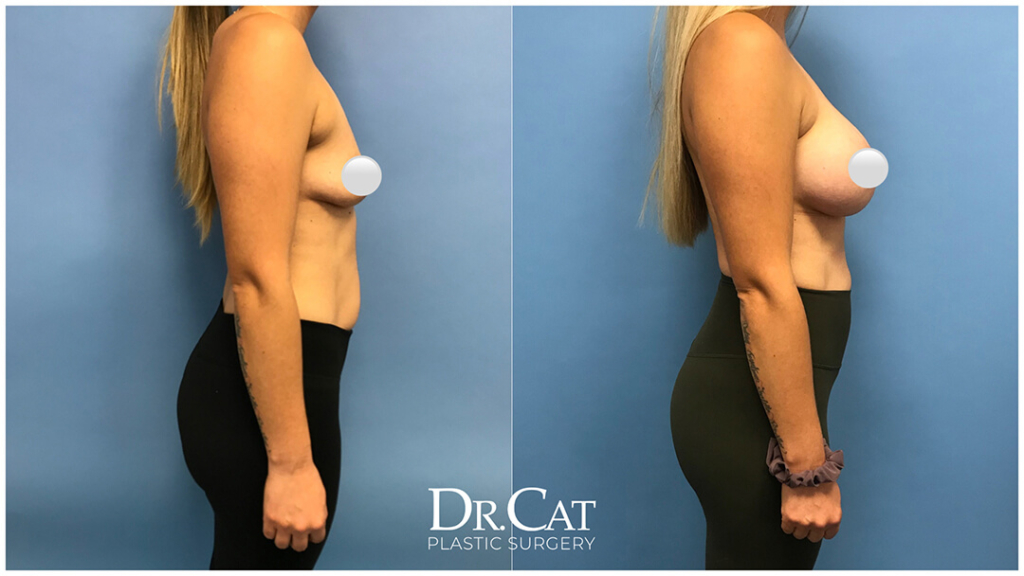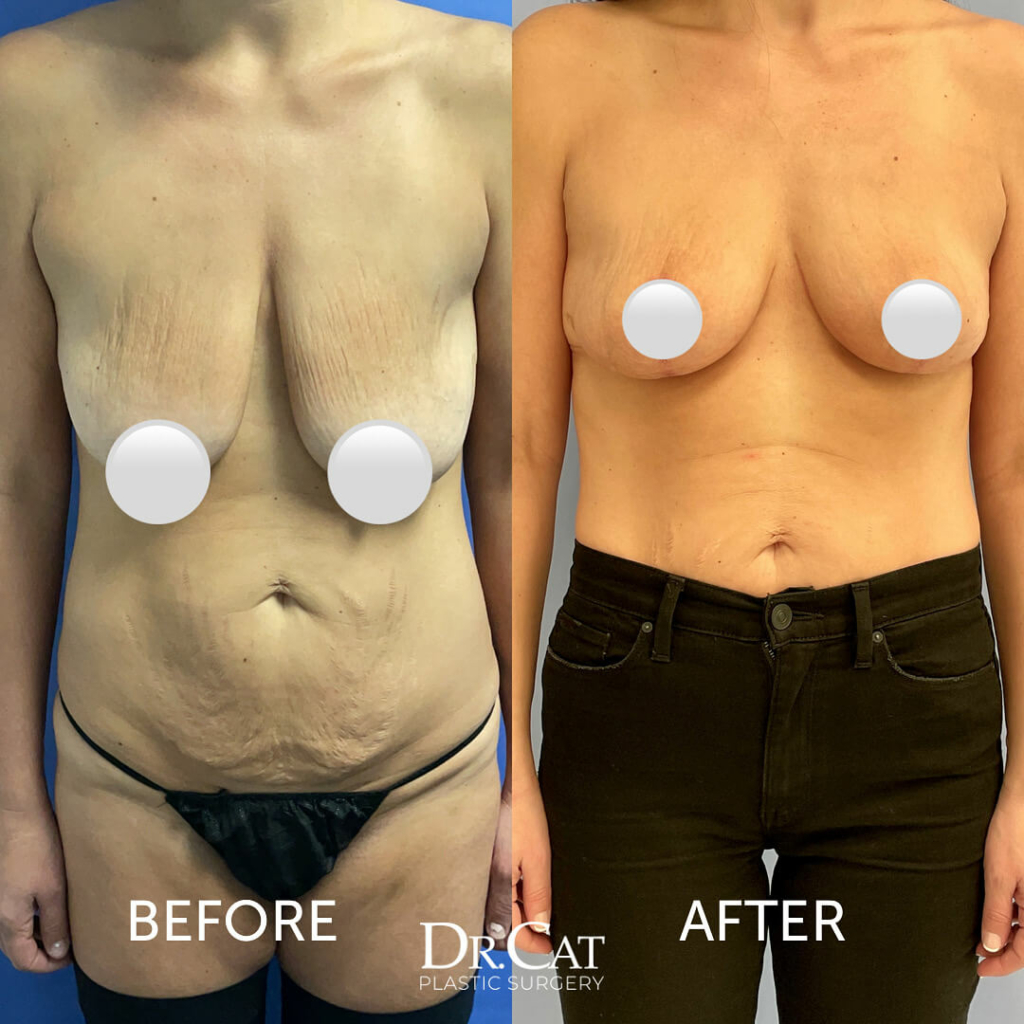If you’ve recently given birth, you might be wondering about plastic surgery after pregnancy. Postpartum pregnancy can repair damage to muscles, skin, and tissue that was affected by hormones, stretching and carrying the weight of your baby for nine months. Whether you’re considering liposuction, a breast lift, a tummy tuck, labiaplasty, or a combination of these procedures, there are some guidelines you’ll want to consider as you plan. A “mommy makeover,” which combines the most popular post-pregnancy cosmetic procedures or an individual plastic surgery procedure can help restore your body closer to your pre-pregnancy figure when lifestyle changes alone aren’t producing the results you hoped for.
Plan to Wait a Few Months Before Considering Plastic Surgery
It’s also important to keep in mind that pregnancy and birth are significant processes for your body to undertake. It requires its own healing time. Cosmetic surgery procedures are most successful when you have time to rest and recuperate properly. This may not always be possible during the first six months with a newborn because certain post-op care can conflict with caring for a newborn. For example, after breast surgery patients are not able to lift anything heavier than five pounds, and most newborns are over However, with the proper support system, and depending on the extent of your surgery, it may be possible.
Breastfeeding and Undergoing Cosmetic Surgery
 If you are breastfeeding, it’s important to understand that anesthesia medication can enter into the breastmilk, so it is best to wait until you are done breastfeeding to have plastic surgery. But this doesn’t eliminate the option of surgery. You may be able to prepare and freeze supply of a two weeks’ worth of breastmilk to feed your baby after surgery. During the healing process, you’ll need to pump and discard the breastmilk in order to maintain your supply. However, it’s also important to consider whether you will be up to the task of resuming breastfeeding while continuing to heal after surgery. Also, keep in mind that if you are consulting about a breast procedure, you will want to wait until you have completed breastfeeding because breastfeeding changes the breast size and shape, which will alter the plan and results. The best time to consult about a breast procedure is once your breast milk has dried up, and you have noticed no visible changes in your breast’s appearance.
If you are breastfeeding, it’s important to understand that anesthesia medication can enter into the breastmilk, so it is best to wait until you are done breastfeeding to have plastic surgery. But this doesn’t eliminate the option of surgery. You may be able to prepare and freeze supply of a two weeks’ worth of breastmilk to feed your baby after surgery. During the healing process, you’ll need to pump and discard the breastmilk in order to maintain your supply. However, it’s also important to consider whether you will be up to the task of resuming breastfeeding while continuing to heal after surgery. Also, keep in mind that if you are consulting about a breast procedure, you will want to wait until you have completed breastfeeding because breastfeeding changes the breast size and shape, which will alter the plan and results. The best time to consult about a breast procedure is once your breast milk has dried up, and you have noticed no visible changes in your breast’s appearance.
How soon after having a baby can I get liposuction?
Liposuction removes stubborn fat deposits while reshaping and contouring many areas of the body. Lipo can be performed on a number of areas, including the stomach, buttocks, thighs, hips, and arms. Pregnancy can cause weight gain and some women find it particularly difficult to shed stubborn pockets of fat on certain areas of the body. Lipo not only removes this fat but by removing these fat cells, it can permanently keep fat from coming back to this area again. Post-pregnancy liposuction can be scheduled for as soon as three to four months postpartum. However, the time you’ll need to wait after giving birth may be longer depending on how much healing your body needs as well as your desired location for the lipo. Dr. Cat typically advises her patients to be within 10-15 pounds of their goal weight before surgery.
How long do I have to wait to get a tummy tuck after giving birth?
 Pregnancy, childbirth, and hormonal fluctuations can cause damage to the tissue and muscles of the abdomen, leading to back pain, a stomach “pooch” and excess skin. A tummy tuck can tighten the muscles of the abdomen and the skin. If you have had a C-Section, you’ll need to allow your body time to heal from this incision. It’s best to allow for your weight to have stabilized, so six months postpartum is a general benchmark.
Pregnancy, childbirth, and hormonal fluctuations can cause damage to the tissue and muscles of the abdomen, leading to back pain, a stomach “pooch” and excess skin. A tummy tuck can tighten the muscles of the abdomen and the skin. If you have had a C-Section, you’ll need to allow your body time to heal from this incision. It’s best to allow for your weight to have stabilized, so six months postpartum is a general benchmark.
Can I have a breast lift shortly after giving birth?
 Of course, breasts undergo many changes during pregnancy. If you’re breastfeeding, you’ll need to wait several weeks after you’ve stopped breastfeeding. Your breastmilk production should have completely stopped and your breasts should have stabilized in a consistent shape and size for best results.
Of course, breasts undergo many changes during pregnancy. If you’re breastfeeding, you’ll need to wait several weeks after you’ve stopped breastfeeding. Your breastmilk production should have completely stopped and your breasts should have stabilized in a consistent shape and size for best results.
When can I undergo a labiaplasty after childbirth?
It’s not just childbirth that can cause tearing and stretching of the labia. Pregnancy hormones can also cause the tissue to grow larger, which can result in irritation and excess skin. A labiaplasty can help remove this excess skin and smooth the labia region. You won’t need to wait long after childbirth for this life-changing procedure. After two months you should be ready to undergo the procedure. However, if you are breastfeeding, you will want to consult with your doctor about when it is safe to resume post-surgery, due to anesthesia passing into breast milk.
Can I have a full-body plastic surgery procedure postpartum?
A full body procedure sometimes called a “mommy makeover” involves multiple cosmetic procedures like a Brazilian butt lift (BBL), tummy tuck, and lipo. Dr. Cat advises prospective patients to have their weight stabilized or be close to their goal weight prior to any body-centered plastic surgery. Usually, this takes at least 4-6 months after delivery. If you’re interested in a BBL after childbirth, or a BBL after a C-section, which involves transferring your own fat from other parts of your body, you will need to wait about 6 months to have plastic surgery. Since Dr. Cat books surgeries around 6-9 months in advance, you can get a head start by booking a consultation a few months after you deliver, or when you are about 10 pounds within your goal.
Do I need to wait until after I am completely through having children before getting plastic surgery?
Many women wonder if they should undergo a cosmetic procedure or wait until they are completely through with childbearing. This is a very personal decision and a consultation with Dr. Cat and her team can help you with finding the right answer. Because pregnancy and childbirth can bring about significant changes in the body, the results of a cosmetic surgery procedure may need revision after a future pregnancy and birth. However, this depends on the procedure and your personal needs. For some women, it’s important to address a condition and they would rather take the chance of needing a future revision if needed than wait until they are through with their childbearing years to address an area they are unhappy with.


